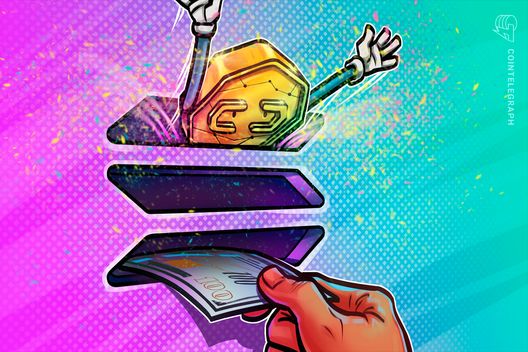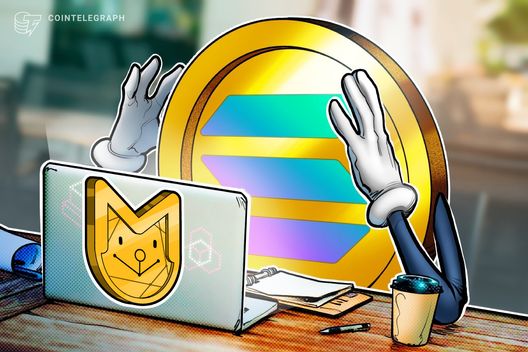The cryptocurrency space is buzzing with excitement as Hyperlane, a team focused on creating interoperability solutions, announced their upcoming $HYPER token airdrop scheduled for April 22. This initiative, aimed primarily at the community, is designed to reward users for their early support and contributions to the platform. As confirmed by a press release shared with CoinDesk, interested individuals can check their eligibility to receive the tokens through a dedicated portal provided by the Hyperlane Foundation, which will be available by April 13.
A significant portion of the token supply—57%—will be allocated to community members, underscoring Hyperlane’s commitment to decentralization. The remaining distribution includes 25% for the core team, 10.9% for investors, and 7.1% set aside for the foundation’s treasury. Notably, tokens received by community participants will be fully unlocked upon distribution, while those allocated to the core team and investors will be subject to a lockup period of one year.
But that’s not all! Hyperlane is also unveiling their “expansion rewards” program, which will further engage users based on their activities in developing the network and utilizing cross-chain services. This program aims to incentivize ongoing participation with quarterly rewards proportional to user engagement, highlighting Hyperlane’s vision of nurturing a vibrant ecosystem.
“The retroactive token allocation at TGE is just the first of many over the coming several years, as protocol ownership begins moving into the hands of the developers and end-users who rely on Hyperlane to send assets and other critical messages across chains,” said Nam Chu Hoai, a co-founder of Hyperlane.
This innovative approach aligns with wider trends in the crypto industry focused on community-centric growth and engagement, making it a story worth watching as the April airdrop date approaches. With an initial fundraising round of $18.5 million led by crypto investor Variant, Hyperlane is set to make waves in the interoperability space, bridging the gap between different blockchain ecosystems.

Hyperlane Airdrop and Token Distribution Details
The team behind the interoperability protocol Hyperlane announced significant plans for an upcoming token airdrop. Here are the key points regarding this initiative:
- Airdrop Date: The airdrop is set to take place on April 22.
- Eligibility Check: Users can verify their eligibility for $HYPER tokens via a portal by April 13.
- Token Distribution Breakdown:
- 57% for the community
- 25% for the core team
- 10.9% for investors
- 7.1% for the foundation’s treasury
- Token Lockup: Community recipients will have fully unlocked tokens, while the core team and investors will see a 12-month lock period.
- Expansion Rewards Program: Linked to developer and user activity, these rewards will be distributed quarterly, encouraging ongoing engagement.
- Future Allocations: The initial token distribution is part of a broader plan to transfer protocol ownership to developers and end-users.
“The retroactive token allocation at TGE is just the first of many over the coming several years, as protocol ownership begins moving into the hands of the developers and end-users who rely on Hyperlane.” — Nam Chu Hoai, Co-founder of Hyperlane
This airdrop and associated rewards can impact users by providing an opportunity to participate in the growing ecosystem of decentralized applications, potentially offering financial incentives and a stake in the protocol’s future developments.
Analysis of Hyperlane’s Token Airdrop and Its Market Impact
The forthcoming airdrop of $HYPER tokens by Hyperlane offers a refreshing approach in the blockchain interoperability space, particularly in a market populated by various competitors. One of Hyperlane’s notable competitive advantages is its strong commitment to community engagement, as indicated by the allocation of 57% of the token supply to users. This user-centric model contrasts sharply with other token models where larger percentages are often held by founders or investors, potentially benefiting a wider audience and incentivizing more active user participation.
Furthermore, the addition of the “expansion rewards” program highlights Hyperlane’s intent to not only distribute tokens but also to encourage ongoing engagement through developer and end-user activity. This quarterly distribution model, which ties rewards directly to participation, could stimulate continuous growth and activity on the network, thereby enhancing its ecosystem. Such innovative strategies could make Hyperlane an attractive option for developers seeking a more rewarding and interactive environment in which to build their projects.
However, there are some potential disadvantages to consider. The 12-month lock on tokens allocated to the core team and investors might raise concerns among potential users about short-term governance and decision-making, as those key stakeholders will have limited liquidity in the early stages. This could potentially hinder swift responsiveness to market changes and user feedback, which is crucial in the fast-paced blockchain sphere.
Moreover, while retroactive token allocations to early users can generate buzz, they may not align with the broader strategies of other projects within the interoperability niche, which may adopt a more aggressive approach for user acquisition. Such a distinction could attract or deter certain users, particularly traders looking for quick returns versus those interested in long-term engagement with a more sustainable community-centric project.
In terms of beneficiaries, early adopters and enthusiastic community members stand to gain significantly from this airdrop structure as it rewards them for their involvement. Conversely, potential investors who favor a more traditional distribution model might view Hyperlane’s approach as fraught with risk, as it emphasizes community-driven validation over stable institutional backing.
In summary, while Hyperlane’s strategy positions it uniquely within the interoperability landscape, the implications of these decisions could be double-edged. The focus on users and reward mechanisms could foster a vibrant community; however, potential investors may need to weigh the risks of commitment and liquidity against their own objectives in the evolving blockchain ecosystem.

















